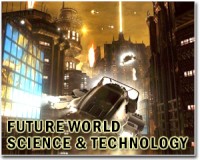 |
Chicago IL (SPX) May 02, 2011 The University of Chicago's Flash Center for Computational Science released a major new version of supercomputer code, called FLASH 4-alpha, on April 29. Based on previous software for simulating exploding stars, this is the first version of the FLASH code that has extensive capabilities for simulating high-energy density physics experiments. The U.S. Department of Energy's National Nuclear Security Administration Advanced Simulation and Computing Program has funded the addition of the new capabilities to this software, which will help scientists at universities across the nation better understand the fundamental properties of matter at high densities and high temperatures. "The enhanced FLASH code is an open toolset for designing and analyzing experiments that address questions about the nature of planetary interiors, the creation of elements via nuclear processes, and how matter behaves in violent shocks and other extreme conditions," said Don Lamb, Flash Center director and the Robert A. Millikan Distinguished Service Professor in Astronomy and Astrophysics. The code will support academic HEDP research at a variety of laboratories, including major national facilities such as the National Ignition Facility at Lawrence Livermore National Laboratory in California, the Z machine at Sandia National Laboratories in New Mexico and the Omega Laser Facility at the University of Rochester. "These facilities use extremely powerful lasers or large amounts of electric current to generate conditions that allow scientists to investigate and address important issues in areas such as astrophysics, material science, planetary science and fusion energy," said Milad Fatenejad, a Flash Center research scientist. "Simulations play a vital role in demonstrating the viability of proposed experiments and analyzing experimental results. The enhanced FLASH code will be able to fill both of these roles." The Flash Center is already using the new capabilities in FLASH to simulate radiative shock experiments conducted by the Center for Radiative Shock Hydrodynamics at the University of Michigan and at the Omega Laser Facility, said Fatenejad. LLNL and other laboratories have developed highly capable codes for in-house research in HEDP, Lamb said. "Unlike FLASH, these codes were never designed with the academic community in mind," he said. "Having a workhorse open toolset for scientists at universities is absolutely essential, and until now has not existed." The addition of new HEDP capabilities in the FLASH code has benefited from a collaboration the Flash Center has initiated with scientists at the universities of Michigan and Wisconsin, and at Los Alamos National Laboratory and Lawrence Livermore National Laboratory. "We are very excited about the science these new capabilities will make possible," said Flash Center associate director Anshu Dubey. "The Center has been able to add HEDP capabilities to the FLASH code and make it run efficiently on the next generation of computers thanks to a decade of funding by the DOE NNSA ASC Academic Strategic Alliance Program and recent funding by the DOE Office of Advanced Scientific Computing Research, as well as access to the world's fastest computers through the NNSA ASC Program and the Office of Science INCITE Program." The new software is a collaboration between the Center, the University's Computation Institute and Argonne National Laboratory. DOE funding for the initiative is through the Argonne Institute for Computing in Science. More than 700 scientists worldwide have used FLASH code, and they have published more than 400 papers reporting results based on its use. Although most of these scientists have used FLASH for astrophysical research, others have modified it for simulating atmospheric physics and biological processes. IBM, NVIDIA and other companies have also licensed FLASH to test and develop hardware and software.
Share This Article With Planet Earth
Related Links University of Chicago Space Tourism, Space Transport and Space Exploration News
 $53 million pledged to Kickstarter in two years
$53 million pledged to Kickstarter in two yearsWashington (AFP) April 28, 2011 Kickstarter, a website which collects donations for creative projects, said Thursday that it has received pledges of more than $53 million since its launch two years ago. Kickstarter, in a blog post to celebrate its second birthday, said 20,371 projects have been proposed on the site over the past two years and 43 percent, or 7,496, have been successfully funded. A total of 9,700 project ... read more |
|
| The content herein, unless otherwise known to be public domain, are Copyright 1995-2010 - SpaceDaily. AFP and UPI Wire Stories are copyright Agence France-Presse and United Press International. ESA Portal Reports are copyright European Space Agency. All NASA sourced material is public domain. Additional copyrights may apply in whole or part to other bona fide parties. Advertising does not imply endorsement,agreement or approval of any opinions, statements or information provided by SpaceDaily on any Web page published or hosted by SpaceDaily. Privacy Statement |